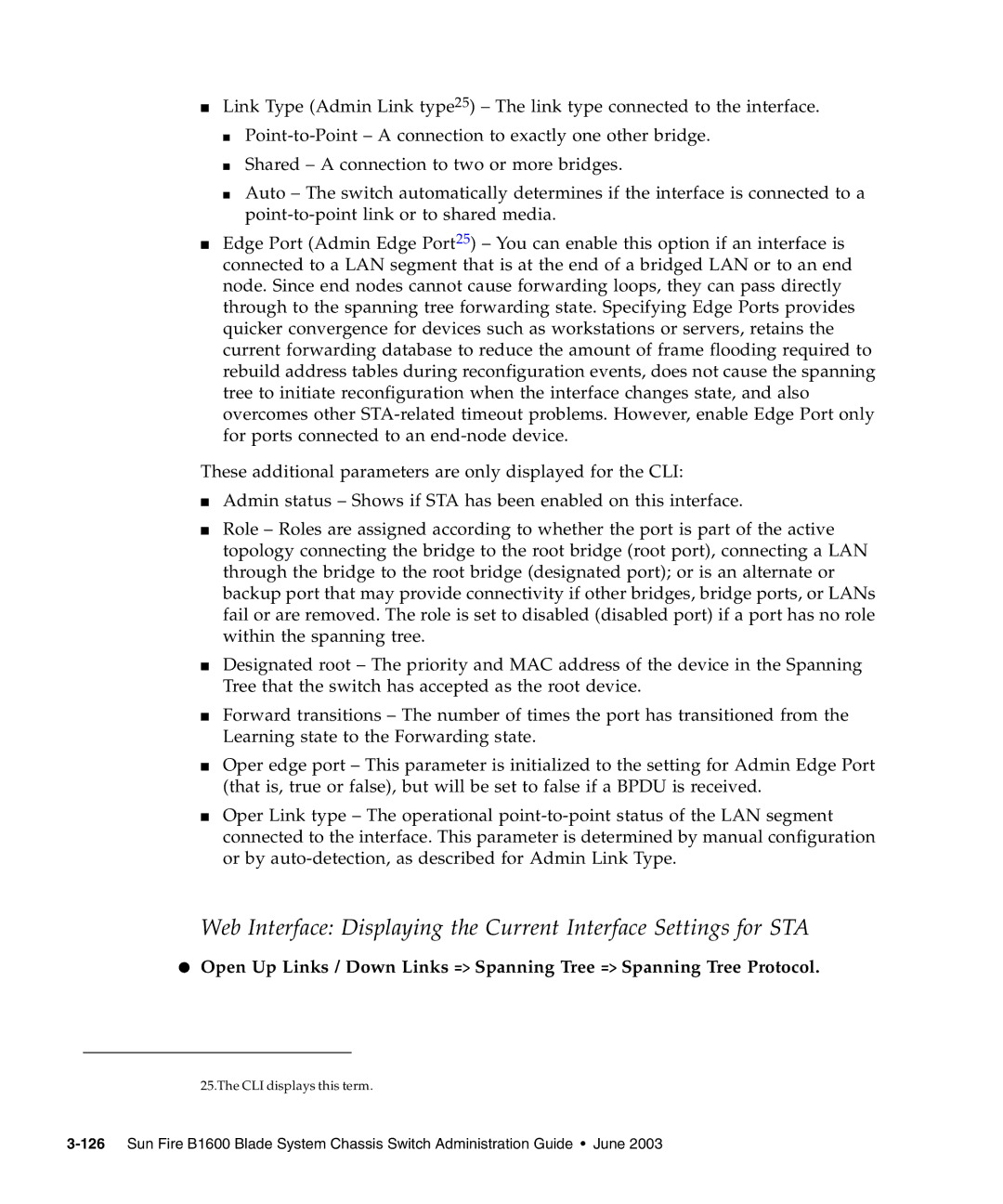■Link Type (Admin Link type25) – The link type connected to the interface.
■
■Shared – A connection to two or more bridges.
■Auto – The switch automatically determines if the interface is connected to a
■Edge Port (Admin Edge Port25) – You can enable this option if an interface is connected to a LAN segment that is at the end of a bridged LAN or to an end node. Since end nodes cannot cause forwarding loops, they can pass directly through to the spanning tree forwarding state. Specifying Edge Ports provides quicker convergence for devices such as workstations or servers, retains the current forwarding database to reduce the amount of frame flooding required to rebuild address tables during reconfiguration events, does not cause the spanning tree to initiate reconfiguration when the interface changes state, and also overcomes other
These additional parameters are only displayed for the CLI:
■Admin status – Shows if STA has been enabled on this interface.
■Role – Roles are assigned according to whether the port is part of the active topology connecting the bridge to the root bridge (root port), connecting a LAN through the bridge to the root bridge (designated port); or is an alternate or backup port that may provide connectivity if other bridges, bridge ports, or LANs fail or are removed. The role is set to disabled (disabled port) if a port has no role within the spanning tree.
■Designated root – The priority and MAC address of the device in the Spanning Tree that the switch has accepted as the root device.
■Forward transitions – The number of times the port has transitioned from the Learning state to the Forwarding state.
■Oper edge port – This parameter is initialized to the setting for Admin Edge Port (that is, true or false), but will be set to false if a BPDU is received.
■Oper Link type – The operational
Web Interface: Displaying the Current Interface Settings for STA
●Open Up Links / Down Links => Spanning Tree => Spanning Tree Protocol.
